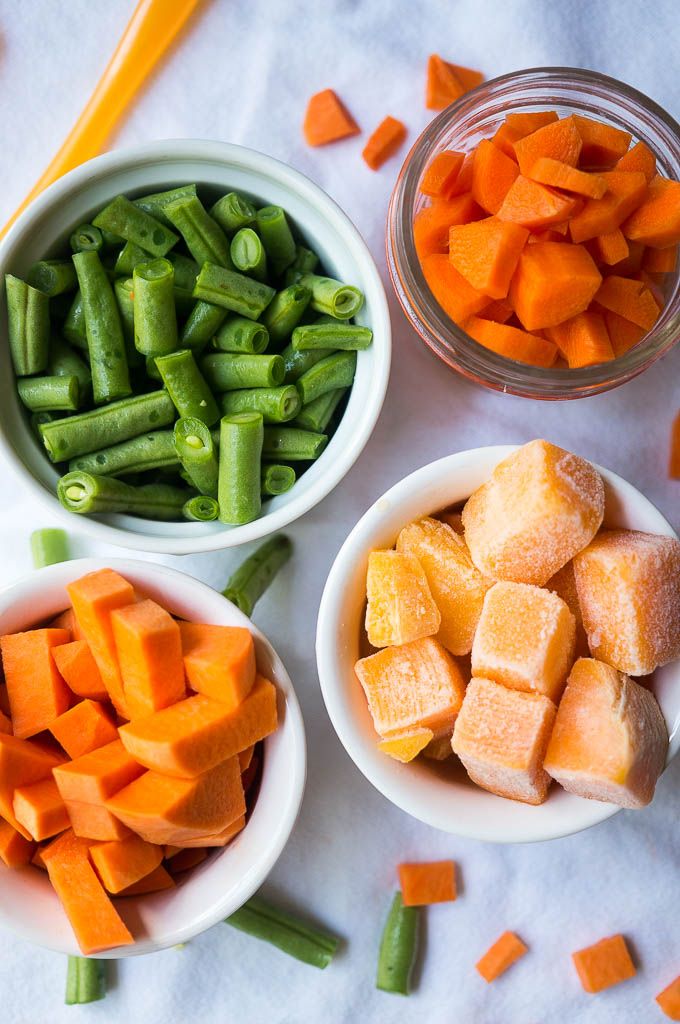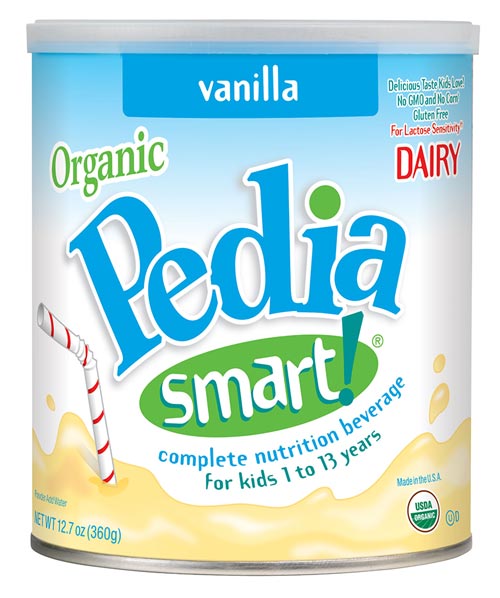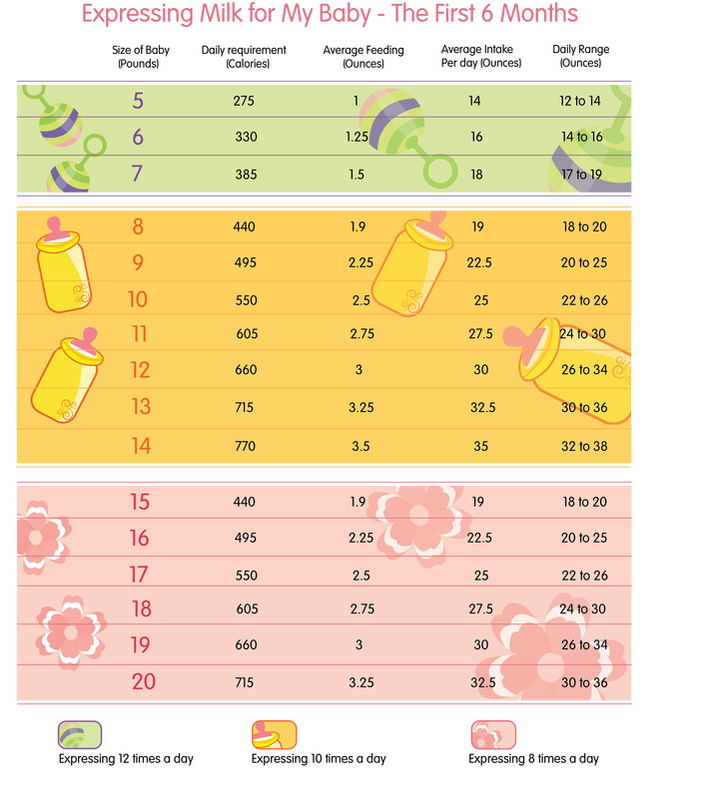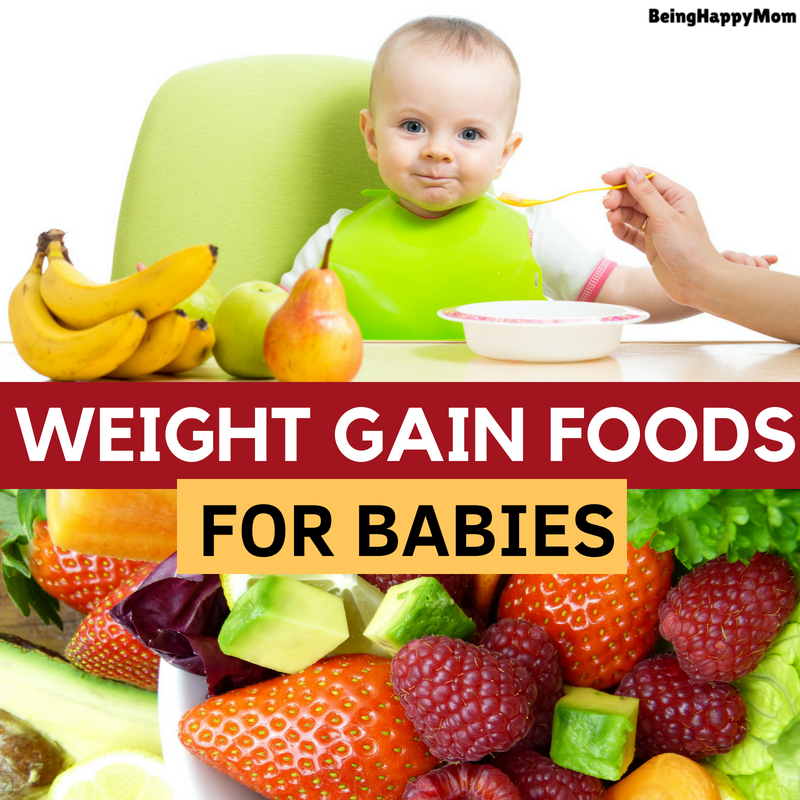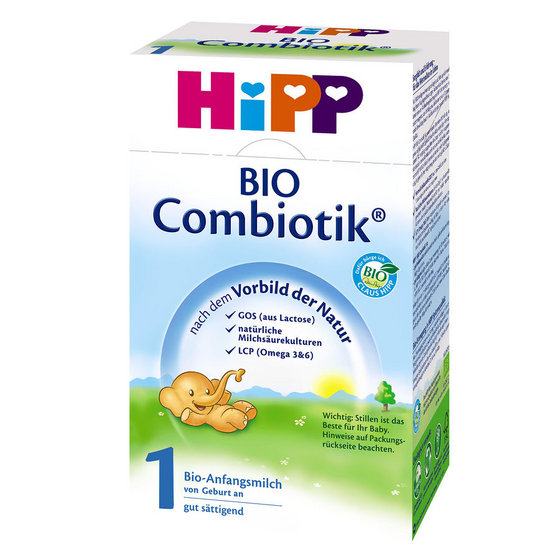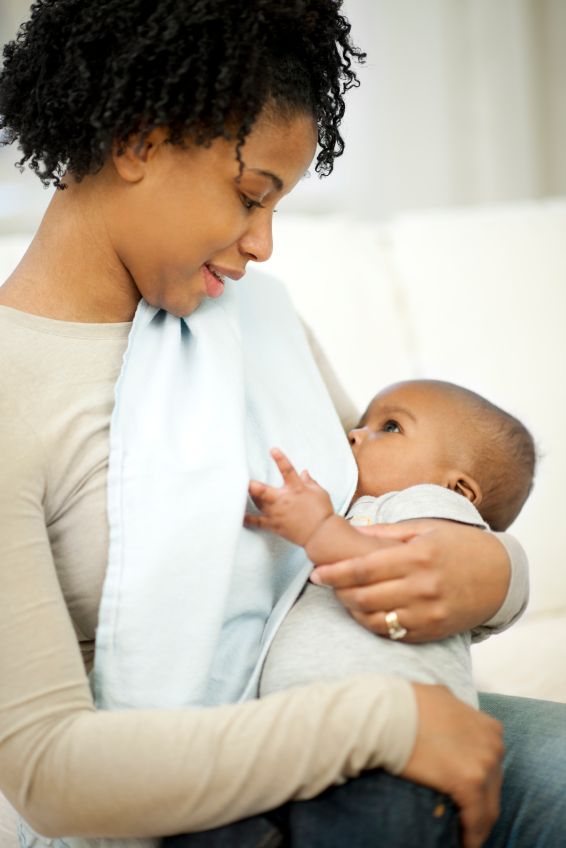Baby and food stages
The 3 baby food stages: What foods and when
Making the leap from breast milk or formula to solids and then eventually to table food is an exciting time. But it’s also a little confusing because there isn’t a one-size-fits-all rule when it comes to baby food stages. While one child may happily take to pureed carrots at 6 months, another may purse their lips at anything but a breast or bottle until 8 months.
To simplify the whole process, here’s a general rule of thumb to keep in mind: Most foods are OK to give to babies in the first year, as long as they’re properly prepared. And if you’re concerned about food storage, read more from our experts on how long baby food lasts.
Here’s the quick lowdown on what to feed baby and when:
- Stage 1: Purees (4 to 6 months).
- Stage 2: Thicker consistency (6 to 9 months).
- Stage 3: Soft, chewable chunks (10 to 12 months).
“With the exception of raw or cooked honey, which shouldn’t be consumed until 12 months because of the risk of infantile botulism, babies can have any food that is texturally appropriate for their developmental feeding stage,” says Dr. Kristen Treegoob, a pediatrician at Children’s Hospital of Philadelphia.
In other words, it’s perfectly fine to give both a 6- and 12-month-old peas, but for the 6-month-old, they need to be pureed.
In the past, parents have been advised to start their baby with single-grain cereals, such as rice cereal, but the American Academy of Pediatrics (AAP) now says there’s “no medical evidence that introducing solid foods in any particular order has an advantage for your baby” — nutritionally or when it comes to long-term food preferences. (So, when your Aunt Joanne tells you that your baby will be a vegetable-hater for life if you start off with applesauce, she’s wrong.)
All of this said, there is a method to the messy madness that is the three stages of baby food. In order to make things less complicated — and more delicious — we tapped top experts and veteran parents to find out everything you need to know about feeding little ones at every stage (plus, we included a handy baby food stages chart). All you have to do now is serve the food and clean the high chair!
All you have to do now is serve the food and clean the high chair!
Stage 1 (4 to 6 months): What you need to know
The fun begins! Stage 1 baby food is typically for babies who are between the ages of 4 months and 6 months. But as with all things parenting-related, it’s important to keep in mind that each baby is different, and there’s no hard and fast rule for starting solids.
“While the AAP recommends exclusively breastfeeding from birth to age 6 months, it’s important to remember that not every baby is exclusively breastfed,” says Dr. Zulma Laracuente, a pediatrician in Alexandria, Louisiana. “Also, some babies show signs of readiness to start food earlier than others. You know your baby best.”
Solids that fall under the Stage 1 category are thin and smooth in texture — not much thicker than breast milk or formula — and contain a single ingredient. If you’re making your baby’s food at home, make sure it’s blended to an almost-watery puree.
“Stage 1 baby foods should have no chunks whatsoever,” says Jenifer Thompson, registered dietician and advanced practice dietician at Johns Hopkins in Baltimore. “Formula or breast milk can be added to the purees to make them thinner.”
“Formula or breast milk can be added to the purees to make them thinner.”
While there’s no specific food parents need to start with, many pediatricians recommend beginning with iron-rich foods, such as iron-fortified cereals or pureed meats.
“The reason we advise introducing solids at 6 months and starting with iron-containing foods is because iron stores that were built up during pregnancy are depleting, and iron is important for infants’ brain development,” says Dr. Melanie Custer, a pediatrician at Deaconess Clinic in Evansville, Indiana.
Custer also says that babies should “absolutely not” decrease their breast milk or formula when they first start off with solids.
“Infants still should receive 24 to 32 ounces of formula or breast milk each day,” she says. “Solids at this point are more of a snack, with baby eating about 3 to 4 tablespoons once or twice a day.”
How to tell your baby is ready for Stage 1
According to Treegoob, here are the signs your baby is prepared to start Stage 1 foods:
- They’re showing an interest in what family members are eating.
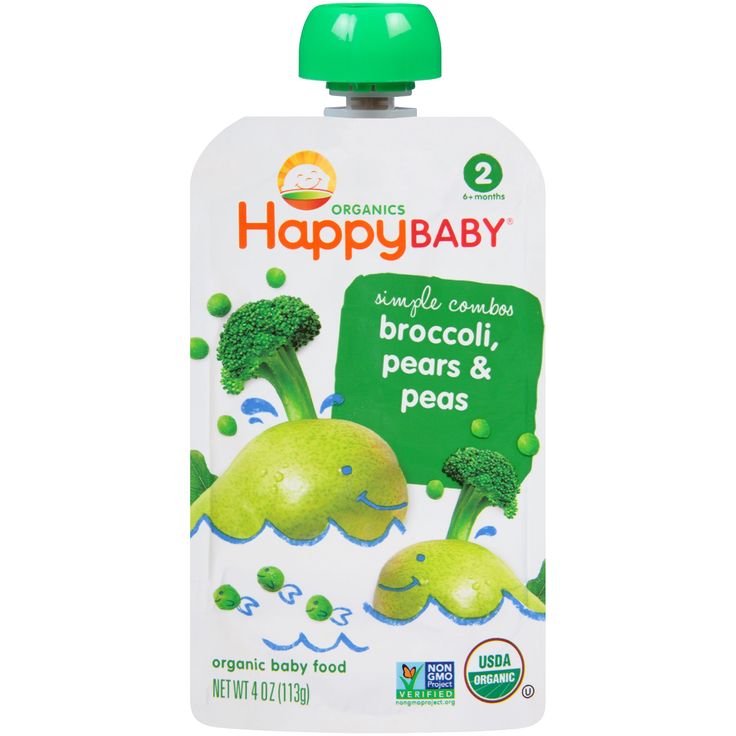
- They’re learning to open their mouths for a spoon.
- They’ve outgrown the involuntary habit of pushing food and spoons out of their mouth with their tongue.
- They have steady head control.
- They have the ability to move food from a spoon to their throat and swallow without choking.
Stage 2 (6 to 9 months): What you need to know
Time to mix it up! While Stage 2 solids are still basically mush, food has a little more texture at this point, as well as a few soft chunks.
“Stage 2 baby foods are thicker in consistency than Stage 1 purees, and many of the jars you find in stores have some small mashable bits in them,” says Treegoob. “These are great for infants who have done well with Stage 1 but who are not quite ready to chew. The typical age for Stage 2 is between 6 to 9 months.”
Treegoob also notes that the 7 to 9 month time frame is also when many babies begin modifying their breast milk or formula intake.
“As long as an infant’s weight remains on track and they’re drinking enough to stay hydrated, there isn’t a reason to worry if baby is showing interest in smaller or less frequent bottle or breastfeeds,” she says. “Infants typically take in somewhere between 24 to 32 ounces a day when they’re between 6 to 9 months.”
“Infants typically take in somewhere between 24 to 32 ounces a day when they’re between 6 to 9 months.”
Whether you’re making your little one’s food on your own or getting it pre-made at the store, you have a little more room to play once you hit Stage 2.
“In addition to being thicker in consistency, Stage 2 foods usually have multiple ingredients, including some spices,” says Custer. “At this point, baby is usually taking in more food than they were in Stage 1, so it’s important to make sure they’re being introduced to a wide variety of foods from different food groups.”
According to the AAP, babies should be eating about 4 ounces of solids — about one small jar of baby food — at each of their meals.
How to tell your baby is ready for Stage 2
Once your baby has consistently been eating Stage 1 foods, they’re likely ready for the next step. Here are other signs to look for, according to Thompson:
- Their oral skills are continuing to develop.
- They’re consistently taking food in and swallowing when you offer it (and not spitting it out).

Stage 3 (9 to 12 months): What you need to know
Now, the true culinary adventure begins — Stage 3 foods! While some babies will still happily have mom and dad spoon-feed them mashed food at this age, many babies will have what you’re having at this point — and they’ll do it themselves, thank you very much.
“As soon as we thought he was ready — at about 9 months — we started giving my son softer, cut-up versions of whatever we were having for dinner,” says mom of two Jennifer Reilly, of New York City. “There was more cleanup, but I actually got to sit down and eat my meal!”
Once babies hit the age range for Stage 3 foods, most have the oral and fine motor skills to self-feed.
“Between 8 to 12 months, babies develop the pincer grasp ability and should be able to pick up small pieces of finger foods with their finger and thumb and bring it to their mouth,” says Thompson.
Technically speaking, Stage 3 solids are thicker, more sophisticated versions of the baby food your little one has already been eating (think vegetable and beef pilaf or tender chicken and stars), but also, they’re not necessary for everyone.
“Stage 3 food is starting to have chunks mixed in, in order to prepare baby for table foods,” says Custer. “But some babies wind up skipping this stage altogether and go straight to soft table foods.”
While it’s perfectly fine to continue with Stage 3 foods up to your child’s first birthday, Treegoob advises letting your baby try their hand at “real food.” “Well-cooked veggies, ripe fruits, shredded meat, scrambled eggs, soft cheese and cooked pasta are all great options for babies this age,” she notes.
Between 9 months and 12 months is also when you’re likely to see a significant drop in how much breast milk or formula your baby is drinking.
“As babies continue to eat table foods, I’ve seen their breast milk or formula intake drop to as low as 16 to 20 ounces per day,” Treegoob says. “That said, some infants continue to show a heavy preference for breast milk or formula despite months of solid introduction. If you feel like your baby may be drinking excessive amounts of breast milk or formula, and they have no interest in food, I would recommend speaking with your pediatrician. ”
”
How to tell your baby is ready for table food
Your child’s readiness to start table food will likely be more discernible than any other baby food stage. As long as they’re continuing to hone their oral skills, as well as their ability to pick food up and bring it to their mouth, you can count on them to let you know they’re ready for “big kid” food.
“My daughter looked like she was ready for pasta, eggs and basically anything we were eating shortly after she started solids,” says mom of two Julie Cortez of Brooklyn, New York. “We waited until about 8 months, when we knew she knew how to properly eat, and sure enough, she ate her whole plate on the first go! We completely skipped the Stage 3 jars of food.”
Follow these safe feeding must-knows
Even though your baby’s eating skills will continue to progress as they gain more experience, it’s important baby is always sitting upright, strapped in a high chair and never left unattended while eating. Also, make sure table food is always soft and cut into small pieces to avoid choking hazards. When first starting out with solids, be sure to wait a few days before giving them something new.
When first starting out with solids, be sure to wait a few days before giving them something new.
“This allows for observation for any adverse reaction or intolerance to the new food,” Thompson says.
And finally, be sure to give your baby a wide range of healthy food in order to expose them to a variety of tastes and textures — and don’t be discouraged if they don’t take to a specific food at first.
“If baby refuses a food or makes a strange face when eating, this may simply mean that it is a new food and unfamiliar to them,” Thompson says. “Try again. It may take 10 to 20 exposures of a new food before they accept it.”
Here’s more on every baby food stage:
- Stage 1 baby food.
- Stage 2 baby food.
- Stage 3 baby food.
Guide to Baby Food Stages (Purees and BLW)
Learn everything you need to know about Baby Food Stages in this easy-to-read, comprehensive guide. It explains the different feeding stages, going over what every stage — Stage 1, Stage 2, and Stage 3, Finger Foods, and Baby-Led Weaning — is all about.
Medically reviewed by Jamie Johnson, Registered Dietitian Nutritionist (RDN)
Baby Food StagesAre you finding the baby food feeding stages confusing?
Well, you are not alone!
Stages 1, 2, 3, table foods, finger foods, baby-led weaning… ahhh… help! What does it all even mean? 🤯
Don’t worry; I’m here for you!
I broke down each stage into an easy-to-digest (pun intended) guide. 👊
What is in this guide:
- Baby Food Ages
- When Can Baby Start Solids?
- Overview: Purees – Stages 1, 2 and 3
- Overview: Baby-Led Weaning or Finger Foods
- Stage 1 Purees
- Stage 2 Purees
- Stage 3 Purees
- Baby-Led Weaning or Finger Foods
Baby Food Stages Video
Watch this video to see how the different baby food stages compare.
Baby Food Ages- Stage 1 Purees: 4-6+ months
- Stage 2 Purees: 6+ months
- Stage 3 Purees: 9+ months
- Finger Foods: 10+ months
- Baby-Led Weaning: 6+ months
When a baby can start on solids is determined by their own rate of development. Generally, it occurs between 4-6 months of age for purees and 6+ months for baby-led weaning. Some of the developmental milestones babies need to reach in order to start solids include: if your baby has solid control of their head and neck, if your baby has doubled in weight, and if your baby is reaching for or opening their mouth when you eat (see my guide here). But remember, before you start baby on solids, you should consult with your pediatrician to make sure your child is developmentally ready.
Generally, it occurs between 4-6 months of age for purees and 6+ months for baby-led weaning. Some of the developmental milestones babies need to reach in order to start solids include: if your baby has solid control of their head and neck, if your baby has doubled in weight, and if your baby is reaching for or opening their mouth when you eat (see my guide here). But remember, before you start baby on solids, you should consult with your pediatrician to make sure your child is developmentally ready.
So, to start, Baby Food Purees are grouped into 3 different stages — Stage One, Stage Two, and Stage Three. Without a doubt, they all consist of baby food purees. But they actually range from single-ingredient smooth purees to chunky combination purees filled with soft-cooked foods. Here’s a quick reference:
Stage One- the first stage of feeding
- single-ingredient thin purees
- smooth and easy to swallow
- high chair
- suction bowl
- spoons
- bib with food catcher
- slightly thicker
- combination purees made up of several different ingredients like fruits and vegetables
- may also include yogurt, grains, and proteins
- combination purees with soft-cooked chunks of food
- perfect for babies that need to practice chewing and swallowing foods
First time making homemade baby food? Then, I would suggest that you start by reading my very in-depth Guide on how to Make Homemade Baby Food – which goes over all the important information such as the best cooking tools to have on hand, safe storage, how to know when baby is ready for solids, how to introduce purees, the best first foods for baby, and more! If you are doing Baby-Led Weaning, then be sure to check out my Complete Guide to Baby-Led Weaning – which covers what exactly is baby-led weaning, to every parent’s concern of baby-led weaning and choking, this guide goes over it all.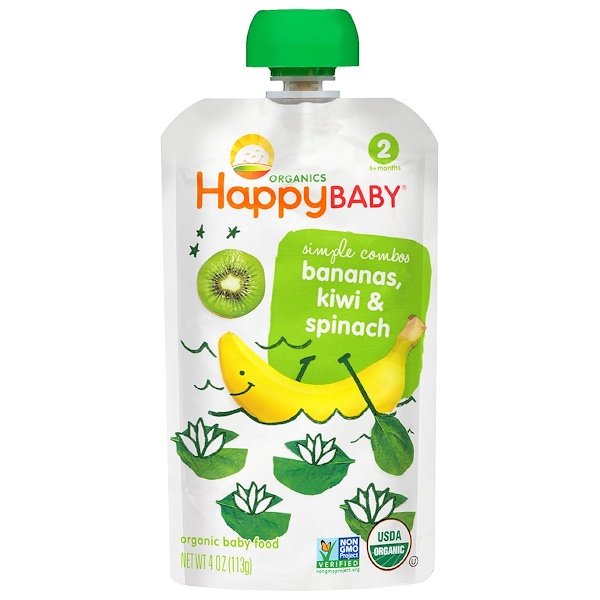 I will also share how to know when baby is ready for BLW, the top 10 best first foods, a helpful sample blw feeding schedule, helpful tools to have on hand, and much much more!
I will also share how to know when baby is ready for BLW, the top 10 best first foods, a helpful sample blw feeding schedule, helpful tools to have on hand, and much much more!
Basically, Baby-Led Weaning and Finger Foods are the same types of food; they’re just served to your baby at different times. Baby-Led Weaning is a newer approach to feeding your baby where you skip the puree stages altogether. Rather, you serve baby chunks of cooked food. Whereas Finger Foods, or sometimes referred to as Table Foods, are typically served to your baby after they master Stage 3 baby food purees.
In short, finger foods are served at 10+ months and baby-led weaning starts at 6+ months.
You can read more here: The Ultimate Guide to Finger Foods for Baby-Led Weaning.
Baby-Led Weaning Products We Love- high chair or clip-on chair
- mat for under high chair
- suction plate
- self-feeding spoons
- long-sleeved bib
Stage 1 baby food is the first type of puree you will be introducing to your baby. Made with a single ingredient and pureed until smooth, these simple purees are perfect for your budding eater. Besides, they are nutritious and full of flavor!
Made with a single ingredient and pureed until smooth, these simple purees are perfect for your budding eater. Besides, they are nutritious and full of flavor!
- age: 4-6+ months
- single-ingredient recipes
- smooth texture
- can be thinned out (similar to a thick soup but dripping off the spoon)
- first bites can be fruits, veggies, or grain cereal
Here are a few tips:
- first, offer your baby one puree at a time to watch for any allergic reactions
- also, consider offering different colors of food and flavors to start developing their palette
- 15 Stage One Baby Food Purees (4-6 months)
- 4 Homemade Baby Cereal Recipes (4+ months)
- 36 Healthy + Homemade Baby Food Recipes (4+ Months)
Meanwhile, Stage 2 purees will make your baby’s mealtime more exciting with multiple ingredients. This time, you can focus on exposing your baby to various fruits, veggies, grains, and proteins. Plus, you can also add spices and herbs to come up with appetizing and unique flavor combinations.
Plus, you can also add spices and herbs to come up with appetizing and unique flavor combinations.
- age: 6+ months
- combination of multiple-ingredient purees
- smooth texture
- can have a thicker consistency than stage one purees
- great way to expose your baby to a variety of flavors and food colors
- may include plain yogurt, grains, and proteins
- 18 Stage 2 Baby Food Purees (That Baby Will Actually Eat)
- 15 Fast + Easy Baby Food Recipes (made in under 15 minutes!)
- 18 Breakfast Ideas for Baby (6+ months)
In contrast, Stage 3 is full of hearty meals with multiple-ingredient purees plus soft-cooked chunks of food. This stage is all about giving your baby time to learn how to chew and swallow small pieces of soft foods. Then the next step will be finger foods or table foods.
- age: 9+ months
- combination purees and soft-cooked chunks of food
- also a great way to expose your baby to various food flavors and colors
- features wholesome fruits, vegetables, grains, meats, yogurt, even spices
- easy to make — simply pulse your own meal with a blender to turn it into a baby meal
- 18 Stage 3 Baby Food Recipes (Easy, Delicious + Homemade)
As mentioned, Baby-Led Weaning is actually a newer approach to feeding your baby where you skip the puree stages altogether. Instead, you serve small chunks or strips of cooked food right from the very start. Ultimately, you would be feeding your baby the exact food you are having at that meal.
Instead, you serve small chunks or strips of cooked food right from the very start. Ultimately, you would be feeding your baby the exact food you are having at that meal.
However, finger foods can be served to your baby after Stage 3.
To sum up, finger foods and the food you serve to baby for Baby-Led Weaning are the same foods. But they are served at different times during your baby’s eating journey. Finger foods are served at 10+ months, while baby-led weaning starts at 6+ months.
If you want to learn more, check out my Ultimate Guide to Finger Foods for Baby-Led Weaning.
- baby-led weaning age: 6+ months
- finger food age: 10+ months
- both include chunks of cooked foods
- can be served in 2-3 inch strips or chopped to pea-sized pieces
Remember, avoid hard foods such as hot dogs, popcorn, dried fruit, nuts, etc., that can be choking hazards.
Baby-Led Weaning (Finger Food) Recipes- 125 Baby Led Weaning Foods (Starter Foods + Recipe Ideas)
- 8 Baby-Led Weaning Meal Ideas for Baby + Toddler
- 6 Baby-Led Weaning Breakfast Ideas
Child development at different age stages
CHILD DEVELOPMENT AT DIFFERENT AGE STAGES
Infancy (first year of life)
When a child is born, it physically separates from its mother. He finds himself in completely different conditions: cold, bright light, an air environment that requires a different type of breathing, the need to change the type of food. To adapt to these new, alien conditions, the child is helped by hereditarily fixed mechanisms - unconditioned reflexes.
What kind of unconditioned reflexes does a newborn have?
This is, first of all, a system of food reflexes. When touching the corners of the lips or tongue, sucking movements appear, and all other movements are inhibited. Because the baby is completely focused on suckling, this response has been called "feeding focus".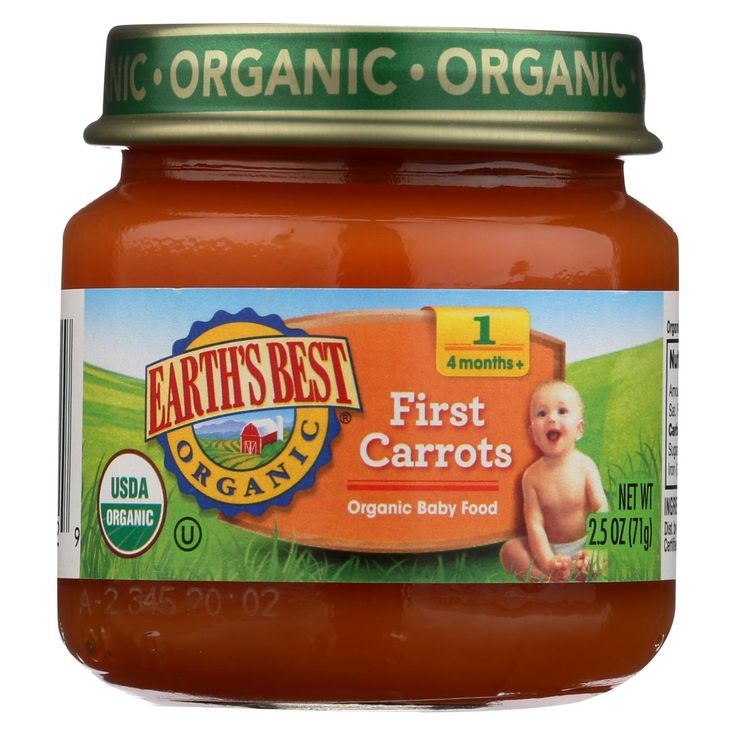
Among the unconditioned reflexes, protective and indicative ones stand out. Some reflexes are atavistic - they are inherited from animal ancestors, but are useless for the child and soon disappear. So, for example, the reflex, sometimes called the "monkey", disappears already in the second month of life.
Unconditioned reflexes of the newborn
Stimuli Reflexes
Action of bright light Eyes close
Slap on the bridge of the nose Eyes close
Hand clap near the baby's head Eyes close
Turning the baby's head to the right Arms flex rapidly
Finger pressing on child's palm Child's toes clenching and unclenching
Finger pressing on child's soles Toes clenching
With a scratching movement, we draw a finger along the sole from the fingers to the heel The big toe rises, the rest are extended
Prick the sole with a pin Knee and foot bend
Raise the lying child with the stomach down The child tries to raise his head, stretches his legs
By the end of the first month of life, the first conditioned reflexes . In particular, the child begins to respond to the feeding position: as soon as he is in a certain position on the mother's lap. v him there are sucking movements. But in general, the formation of conditioned reflexes is characteristic of a later time.
In particular, the child begins to respond to the feeding position: as soon as he is in a certain position on the mother's lap. v him there are sucking movements. But in general, the formation of conditioned reflexes is characteristic of a later time.
How can you describe the mental life of a newborn? The brain of a small child continues to develop, it is not fully formed, therefore, mental life is associated mainly with subcortical centers, as well as an insufficiently mature cortex. The sensations of a newborn are undifferentiated and inextricably merged with emotions, which made it possible for L. S. Vygotsky to speak of “sensory emotional states or emotionally emphasized states of sensations.”
Important events in the child's mental life are the emergence of auditory and visual concentration. Auditory concentration appears at 2-3 weeks. A sharp sound, say, of a door slamming, causes a cessation of movements, the child freezes and becomes silent. Later, at 3-4 weeks, the same reaction occurs to the person's voice. At this time, the child not only focuses on the sound, but also turns his head towards its source. Visual concentration, which appears at 3-5 weeks, outwardly manifests itself in the same way: the child freezes and holds his gaze (of course, not for long) on a bright object.
At this time, the child not only focuses on the sound, but also turns his head towards its source. Visual concentration, which appears at 3-5 weeks, outwardly manifests itself in the same way: the child freezes and holds his gaze (of course, not for long) on a bright object.
Newborn spends time in sleep or drowsiness. Gradually, separate moments, short periods of wakefulness, begin to stand out from this drowsy state. Auditory and visual concentration give wakefulness an active character.
A child comes into this world weak and completely helpless. Such helplessness, complete dependence on an adult constitute the specifics of the social situation of the development of an infant.
The newborn, having acquired the ability to respond to the voice of the mother caring for him, to see her face, establishes new subtle emotional bonds with her. At about 1 month, the baby, when he sees his mother, stops looking at her face, throws up his arms, quickly moves his legs, makes loud noises and begins to smile. This stormy emotional reaction has been called the "revitalization complex". The revitalization complex, which includes a truly human feature - a smile - marks the appearance of the first social need - the need for communication. And the formation of a child's need for communication means that in his mental development he is moving into a new period. The transitional stage of the newborn is coming to an end. Infancy begins.
This stormy emotional reaction has been called the "revitalization complex". The revitalization complex, which includes a truly human feature - a smile - marks the appearance of the first social need - the need for communication. And the formation of a child's need for communication means that in his mental development he is moving into a new period. The transitional stage of the newborn is coming to an end. Infancy begins.
Infancy
The baby is growing rapidly. The growth of a healthy child during the first year of his life increases by about 1.5 times, and weight - by almost 2 times.
Physical development of the infant
Time of onset Motor development
1 month Raises chin
2 months Raises chest
3 months Reaches for an object, but usually misses
4 months Sitting with support
5-6 months Grasping objects
7 months Sitting no support
8 months Sitting up unaided
9 months Standing with support; crawls on stomach
10 months Crawls on hands and knees; walks with two hands
11 months Stands without support
12 months Walks with one hand
Perception .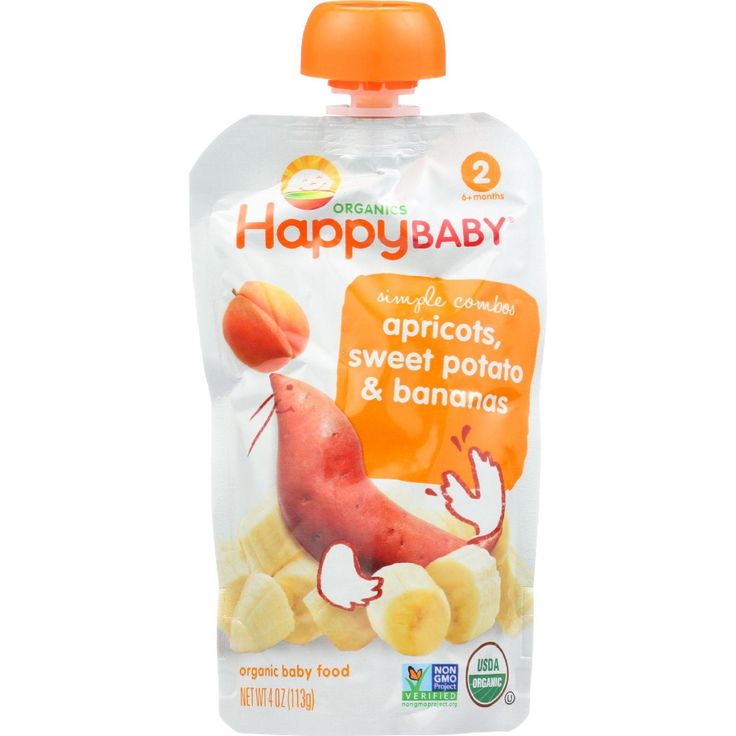 After the second month, the concentration becomes quite long, by 3 months its duration reaches 7-8 minutes. At 4 months, the child not only sees, but already looks: he actively reacts to what he sees, moves and squeals.
After the second month, the concentration becomes quite long, by 3 months its duration reaches 7-8 minutes. At 4 months, the child not only sees, but already looks: he actively reacts to what he sees, moves and squeals.
A child in infancy perceives the shape of objects, highlights the contour and their other elements.
It can be said that in infancy, children are already able to navigate in many parameters of objects. They are attracted by contrasts, the movement of observed objects and their other properties.
By 2-3 months, babies usually show interest in objects that are somewhat different from those they have seen before.
The child distinguishes visually perceived objects by shape, complexity and color. An active interest in color appears later, from 6 months.
Spatial perception also develops, in particular depth perception. American psychologists conducted a beautiful experiment with a "cliff": the baby was placed on a glass table, under which there were two large boards attached at different levels.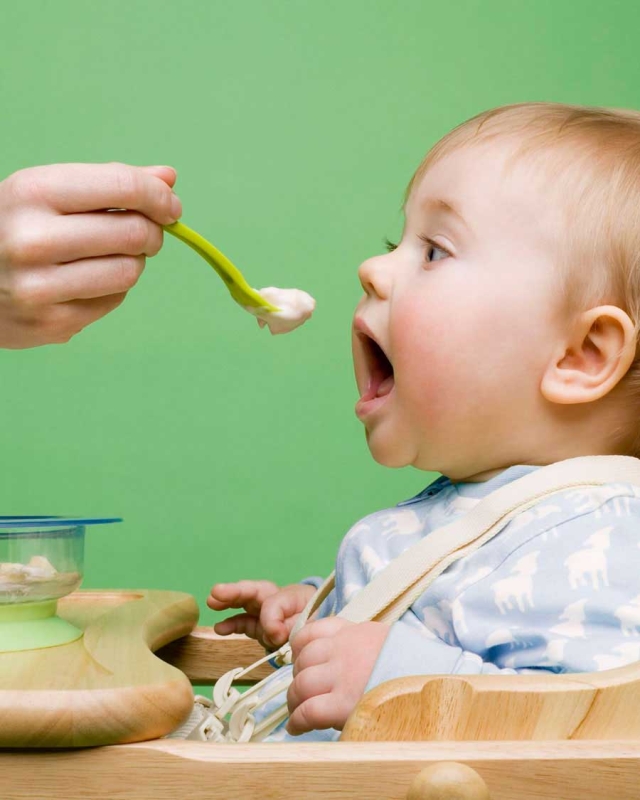 The difference in the levels of these boards, covered with bright, large-sized fabric, created the illusion of a cliff. A small child, tactilely feeling the smooth surface of the glass, crawls to the mother, not noticing the depth. After 8 months, most babies avoid the "cliff" and start crying.
The difference in the levels of these boards, covered with bright, large-sized fabric, created the illusion of a cliff. A small child, tactilely feeling the smooth surface of the glass, crawls to the mother, not noticing the depth. After 8 months, most babies avoid the "cliff" and start crying.
Movement and action. The movements of the baby's hands directed to the object, the palpation of the object appear at about the fourth month of life. At 5-6 months, the child can already grasp an object, which requires complex visual-motor coordination. Grasping is the first purposeful action of the child, it is a prerequisite, the basis for mastering manipulations with objects.
In the second half of the year, hand movements and corresponding actions are intensively developed. The child swings the objects he has grasped, knocks, throws and picks them up again, bites, shifts from hand to hand, etc. Chains of identical, repetitive actions unfold, which Jean Piaget called circular reactions.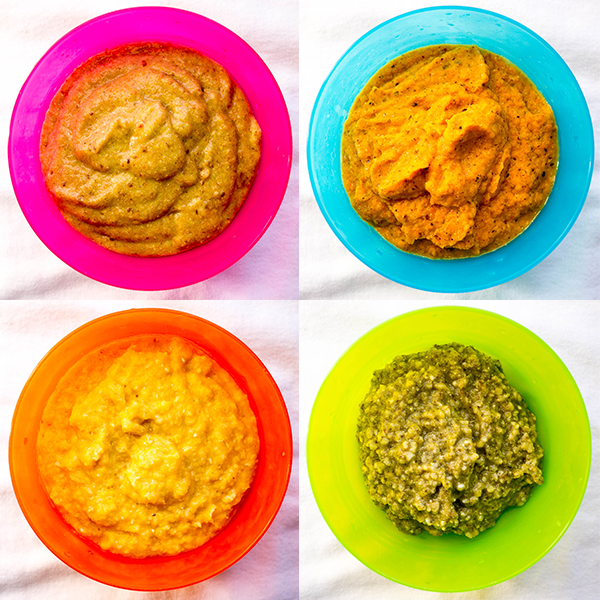 After 7 months there are "correlating" actions: the child puts small objects into large ones, opens and closes the lids of the boxes. After 10 months, the first functional actions appear, allowing relatively correct use of objects, imitating the actions of adults. The child rolls the car, beats the drum, brings a cup of juice to his mouth.
After 7 months there are "correlating" actions: the child puts small objects into large ones, opens and closes the lids of the boxes. After 10 months, the first functional actions appear, allowing relatively correct use of objects, imitating the actions of adults. The child rolls the car, beats the drum, brings a cup of juice to his mouth.
By the end of the year, the child begins to explore the world of human objects and learn the rules of action with them. A variety of actions lead him to the discovery of more and more new properties of the objects surrounding him. Focusing on the surrounding reality, he is interested not only in "what it is", but also in "what can be done with it."
Perception and action is the basis that makes it possible to judge the initial forms of visual-active thinking in infancy.
By the end of the 1st year, the child is involved in rather complex actions of the game.
Memory. The cognitive development of an infant involves the inclusion of memory mechanisms, of course, its simplest types. Recognition comes first. At 3-4 months old, he recognizes the toy that the adult showed him, preferring it to others that are in his field of vision, a 4-month-old child distinguishes a familiar face from an unfamiliar one.
Recognition comes first. At 3-4 months old, he recognizes the toy that the adult showed him, preferring it to others that are in his field of vision, a 4-month-old child distinguishes a familiar face from an unfamiliar one.
After 8 months, reproduction appears - the restoration of an image in the memory when there is no similar object in front of the child.
Along with cognitive development, emotional development is also observed during infancy. This line of development also directly depends on communication with close adults. In the first 3-4 months, children manifest a variety of emotional states: surprise in response to the unexpected (slowing down of movements, a decrease in heart rate), anxiety in case of physical discomfort (increased movements, increased heart rate, closing eyes, crying), relaxation when a need is satisfied.
After 3-4 months, he smiles at acquaintances, but is somewhat lost at the sight of an unfamiliar adult. At 7-8 months, anxiety increases sharply when strangers appear.
Approximately at the same time, between 7 and 11 months, the so-called "fear of parting" appears - sadness or acute fright at the disappearance of the mother (when she is gone for a long time or she just went out for a while).
Communicating with mother or other close person, by the end of 1 year the baby strives not only for purely emotional contacts, but also for joint actions.
Begins in infancy and speech development. In the first half of the year, speech hearing is formed, and the child himself, with joyful animation, makes sounds, usually called humming. In the second half of the year, babbling appears, in which one can distinguish some repetitive sound combinations, most often associated with the actions of the child. Babble is usually combined with expressive gestures. By the end of 1 year, the child understands 10-20 words spoken by adults, and he himself pronounces one or several of his first words, similar in sound to the words of adult speech. With the appearance of the first words, a new stage in the mental development of the child begins.
Crisis of 1 year
The transition period between infancy and early childhood is commonly referred to as the crisis of 1 year. Like any crisis, it is associated with a surge of independence, the emergence of affective reactions. Affective outbursts in a child usually occur when adults do not understand his desires, his words, his gestures and facial expressions, or understand, but do not do what he wants. The word "impossible" in a crisis period is of particular relevance.
The main acquisition of the transitional period is a kind of children's speech, which L. S. Vygotsky called autonomous. It differs significantly from adult speech both in sound form (phonetic structure) and in meaning (semantic side). The child has his own logic, and his words become ambiguous and situational.
A young child's language is agrammatic. Words do not combine into sentences, but pass into each other like interjections, resembling a series of incoherent exclamations.
Children's speech is understandable only to the closest people who are constantly next to the child and understand the meaning of his words.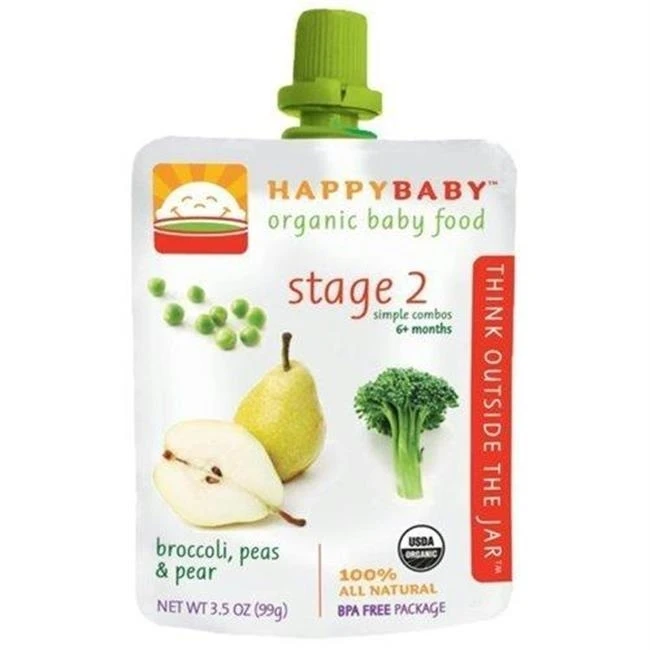
So, a one-year-old child, entering a new period - early childhood - already can do a lot: he walks, or at least tries to walk; performs various actions with objects; his actions and perceptions can be organized with the help of speech, since he understands the words of adults addressed to him. He begins to speak and, although his speech is situational and ambiguous, incomprehensible to most of those around him, his opportunities for communicating with loved ones are greatly expanded. The cognitive and emotional development of the child is based primarily on the need to communicate with adults - the central neoplasm of this age period.
Russian Union of Pediatricians
Nutrition for children aged 1 to 3 years
The period from 1 to 3 years of life is a crucial stage in the transition to an adult type of nutrition, which has certain features. In order to ensure that all the necessary nutrients enter the child's body and at the same time prevent an excess of individual nutrients, nutrition should be balanced and varied.
The daily amount of food for children aged 1 to 1.5 years should be 1000-1200 g, from 1.5 to 3 years - 1200-1500 g, the amount of food in one feeding should not exceed 300-350 ml. The diet consists of three main meals per day and two snacks. It is considered optimal when breakfast is 25% of the total energy density of the diet, lunch is 30–35%, dinner is 20%, and additional meals are about 10%. In general, the child can eat the same food as the rest of the family.
In the diet of a child of 1-3 years of age must be present daily : animal or poultry meat, dairy and sour-milk products, vegetables, fruits, bread, cereals, vegetable and butter; fish and eggs are included in the diet 2-3 times a week.
Cereal products: bread - 2-3 servings per day, cereals and side dishes - 1 time per day
Fruit and/or vegetables: at least 5 times a day
Dairy products: at least 3 servings per day (including those used to make cereals, yoghurts, fermented milk drinks, cottage cheese, infant formula or breast milk).
Domestic pediatricians recommend, when compiling a diet for children aged 1–3 years, preference should be given to specialized children's dairy products of industrial production that meet high quality requirements and safety indicators for this age. Most children's dairy products are additionally enriched with vitamins and/or minerals and other biologically active components, taking into account the physiological needs of children of this age. At the same time, in foreign recommendations, children over 1 year old are offered the gradual introduction of whole cow's milk, which is rich in fats necessary for proper growth and development, the absorption of vitamins A and D, the development of the brain and nervous system of the child.
Meat dishes: 2-3 times a day
Fish dishes: 2-3 servings per week
Eggs: 2-3 per week
Dietary fats: 3-4 teaspoons of butter and/or vegetable oil oils per day
When cooking, use the minimum amount of salt and sugar, and do not add them to industrial products.